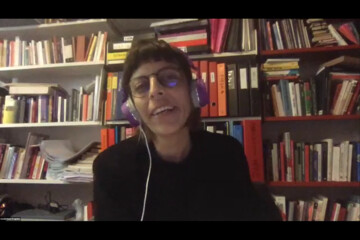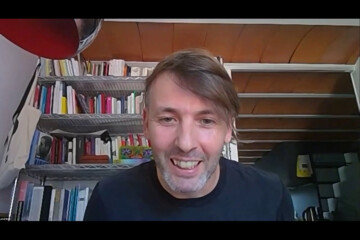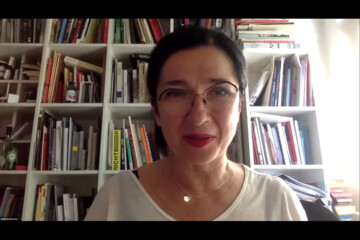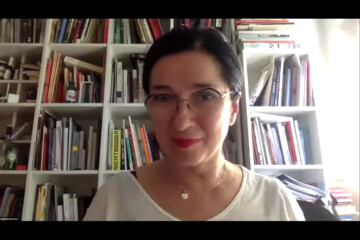“These systems are anti-life, they will not be compelled to cure themselves.
We will not allow these corrupted sickened systems to recuperate.
We will spread. We are the antibodies.”
An Indigenous Anti-Futurist Manifesto (indigenousaction.org)[1]
Modifying Tronto’s definition[2], Puig de la Bellacasa writes that → care is “everything that is done (rather than everything that ‘we’ do) to maintain, continue, and → repair ‘the world’ so that all (rather than ‘we’) can live in it as well as possible”.[3] Everything that is done shifts and broadens the political character of care by strengthening the bond of lives → interdependence on the planet. We/All are dependent, thus, we/all are involved within specific caring activities which define who lives and who does not, and how. In this sense, care is a “multidimensional matrix of power relations involving social and → ecological aspects”.[4] As → queer → feminism’s activism and thought have well shown, care is never an innocent practice but a conflictual relation linking living beings, spaces and technologies. Indeed, all lives are dressed by blood relations and class, gender, race, ableism, age and species hierarchies. These are the outfits guaranteeing access to care or not: some care and some are cared for, some care and will never be cared for.
As this complex power relation, this terrain of conflict and oppression making and generating (not all) lives, is tightening the boundary around what and who is worthy to survive, my proposal is to explore how a radical comprehension of the conflictual character of care is essential to move care functions far from being the handmaid of capital reproduction’s priorities and towards a common purpose of making and regenerating all and better lives.
What is essential?
What and who has been taken care of by the → extractivist driven governmentality of advanced democracies reveals what and who is left hurt and oppressed. A political battleground that, today, through the COVID-19 pandemic, has emerged more explicitly. This visibility allows us to explore the paradoxes, ambiguities and hierarchies of care, and to read more clearly the historical conflict between divergent care practices and models.
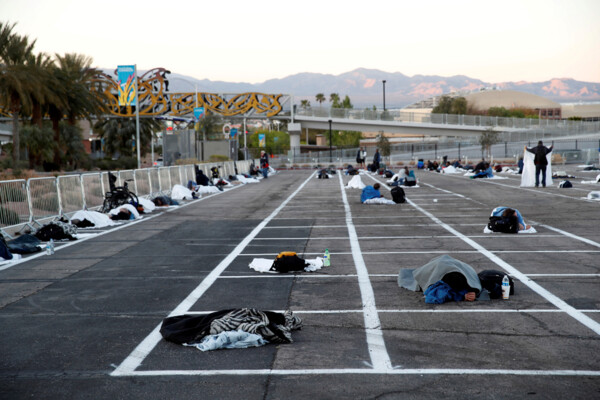
Homeless people sleeping in a temporary parking lot shelter at Cashman Center, with spaces marked for social distancing, Las Vegas, Nevada, 30 March 2020. Photo: Reuters/Steve Marcus.
As early as the 1970s “the campaign Wages for Housework demonstrated that the transition to capitalism, starting from the dawn of modernity, was made possible by the invisibilisation, naturalisation and devaluation of reproductive labour. Without the domestic and care work that allowed the subsistence of (male) workers, there would have been no labour force. Without the labour force, there would have been neither factories nor profit.”[5] Thus, what the pandemic has clearly revealed is nothing new: social and ecological reproduction tasks have never been acknowledged as work, and have been ascribed to the sphere of “natural” resources available for appropriation so as to legitimise the immense appropriation of wealth.
However, the pandemic is now generating a socio-ecological and economic crisis which is different from the previous ones. From the perspective of capitalism this is not a structural crisis generated by its own accumulation models, instead it is something that got out of hand: an apparently true path error. Therefore, it seems necessary to use this tragedy to accelerate some counter-reflections and – possibly – to take a slight time advantage from the slowdown of the enemy’s productive machines.
Still, this new visibility on care functions full of unstable, contradictory, controversial meanings – which go way beyond the scope of the disease – has also shown that to decide what and who is to be taken care, meaning what is “essential” and for whom, is a crucial political issue still delegated to too few decision-makers.
Moreover, we/all should be aware that the global capitalist class will use chaos and confusion to consolidate and expand its power through the control it can exert on the state apparatus engaged in responding to various emergencies[6].
We/all are stuck in a conflict between models of care
The historical invisibility of care tasks is the result of precise political → choices that organise and determine all lives by placing the reproduction and maintenance of bodies and the environment at the bottom of the political agenda. Thus, the process to reverse these priorities which are at the origins of a structural life emergency must be linked to the ability to collectivise the decision on what is essential and for whom. The democratisation of this placement, which unveils the political character of care, is becoming nowadays the higher terrain of conflict. In this sense, care is not intrinsically “natural”, nor “nice” or “maternal”, but a space of conflict. To fight for and with care means supporting the struggles for universal access to public health, wealth and schools; the struggles against police and state violence; the struggles against the exploitation of communities, common lands and resources – in short, to fight against propriety accumulation.
During the lockdown, I have often found myself thinking about which currently suspended activities I would have liked not to start again to reduce resource and workforce extraction and oppose the myth of eternal growth. This simple question hides a complex issue highlighting the conflict at stake around different caring models. Indeed, answering it requires us to collectively rethink both what can still be produced and what can no longer be produced – by digging down into both necessities and desires – and what we want to continue reproducing and what is no longer worth reproducing – in order to refuse all those caring activities which are the same conditions that enable capitalism. In short, choosing what is no longer worth caring for in order to improve the same conditions of life.[7]
Therefore, questioning what is essential and what is not (and for whom) opens the possibility of shaping a different present, by unfolding both a reflection on the access to health and well-being, as well as a conflict around the priority of life over the economy. Caring, or the ability to keep life alive, becomes an increasingly conflictual practice: to care is to struggle against the necropolitical management of lives, and to struggle is to care for the redistribution of life on → Earth.
Conversely, the model of care which has unravelled rather openly during these last months represents a top-down power aiming at repositioning the economic sector at the core of all priorities, avoiding any reflection on productivity and resources limits. Let’s put it in this way: till now, most of our/all unwaged, poorly paid and highly invisibilised care work has been done to fix capital distortions, ones producing inequalities, violence, and the large-scale destruction of lives and territories. To refuse to do this from now on, to strike against this care model and reverse economic monopolies’ priorities, means to strengthen the inherent anti-capital nature of care.
As the rights activist Ella Baker said in 1978, fighting against oppressions “takes the willingness to stand by and do what has to be done, when it has to be done”, likewise, care is everything that has to be done (rather than “is done”) to maintain, continue, and repair “the world” so that all can live in it better than now (rather than “as well as possible”).[8]

